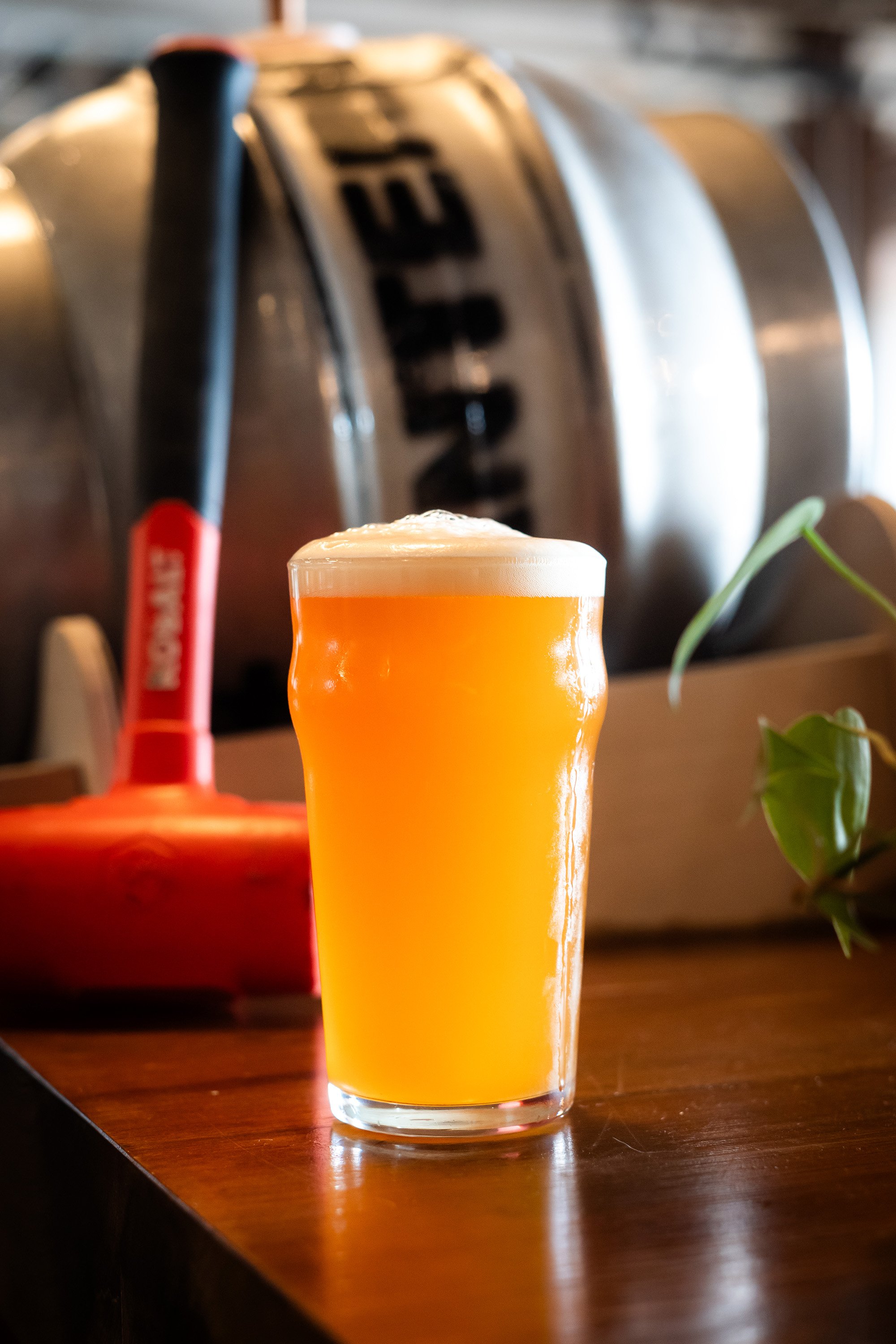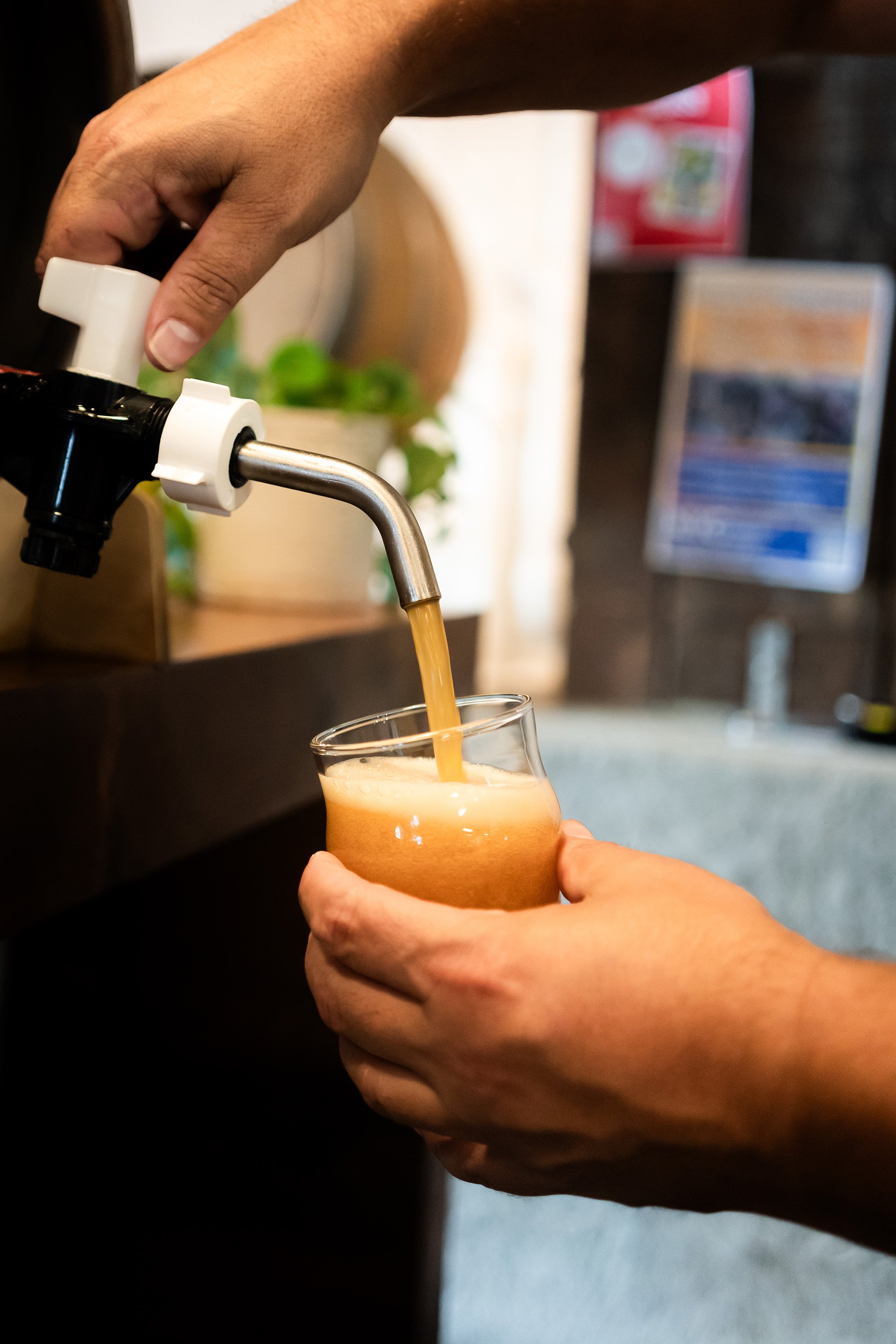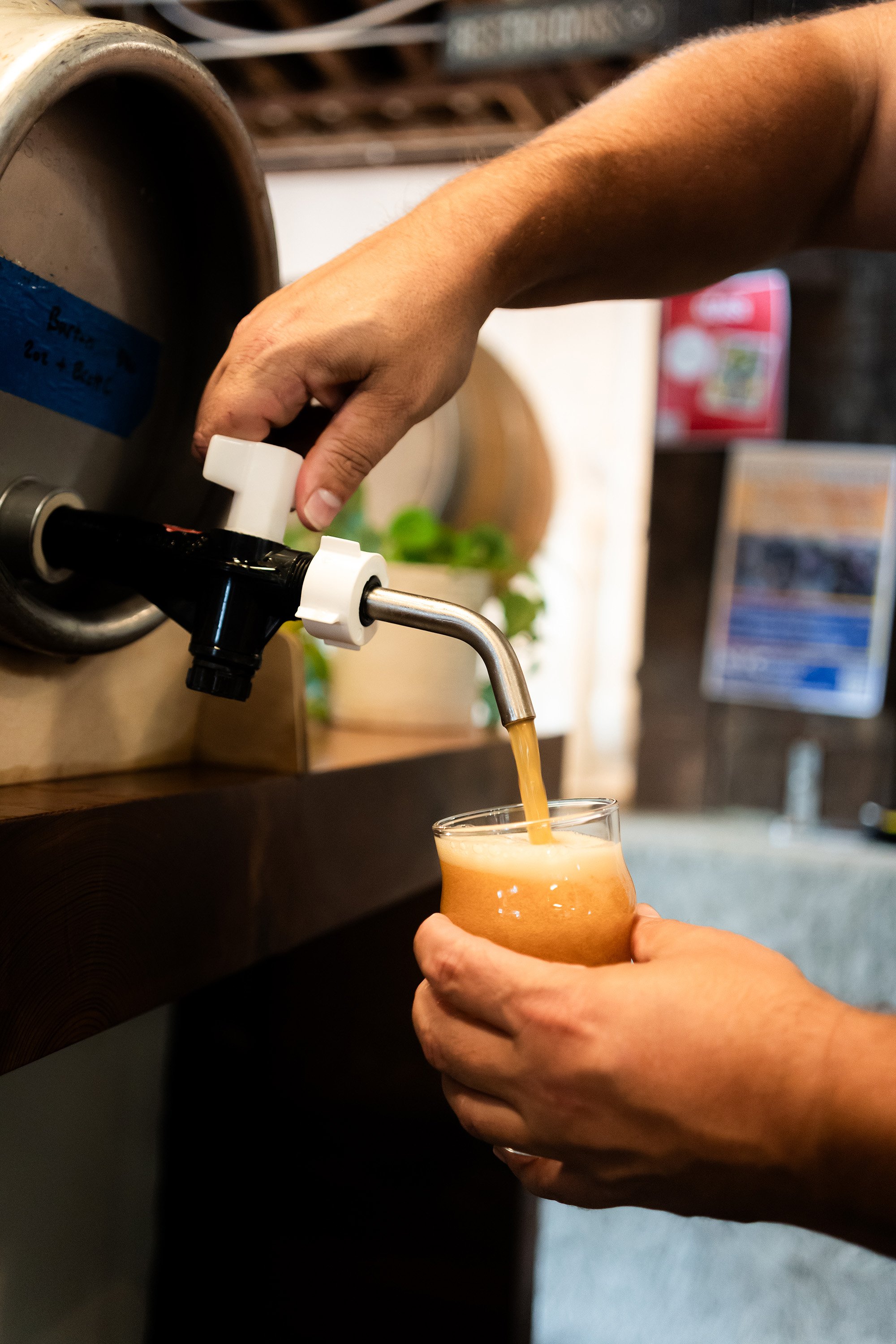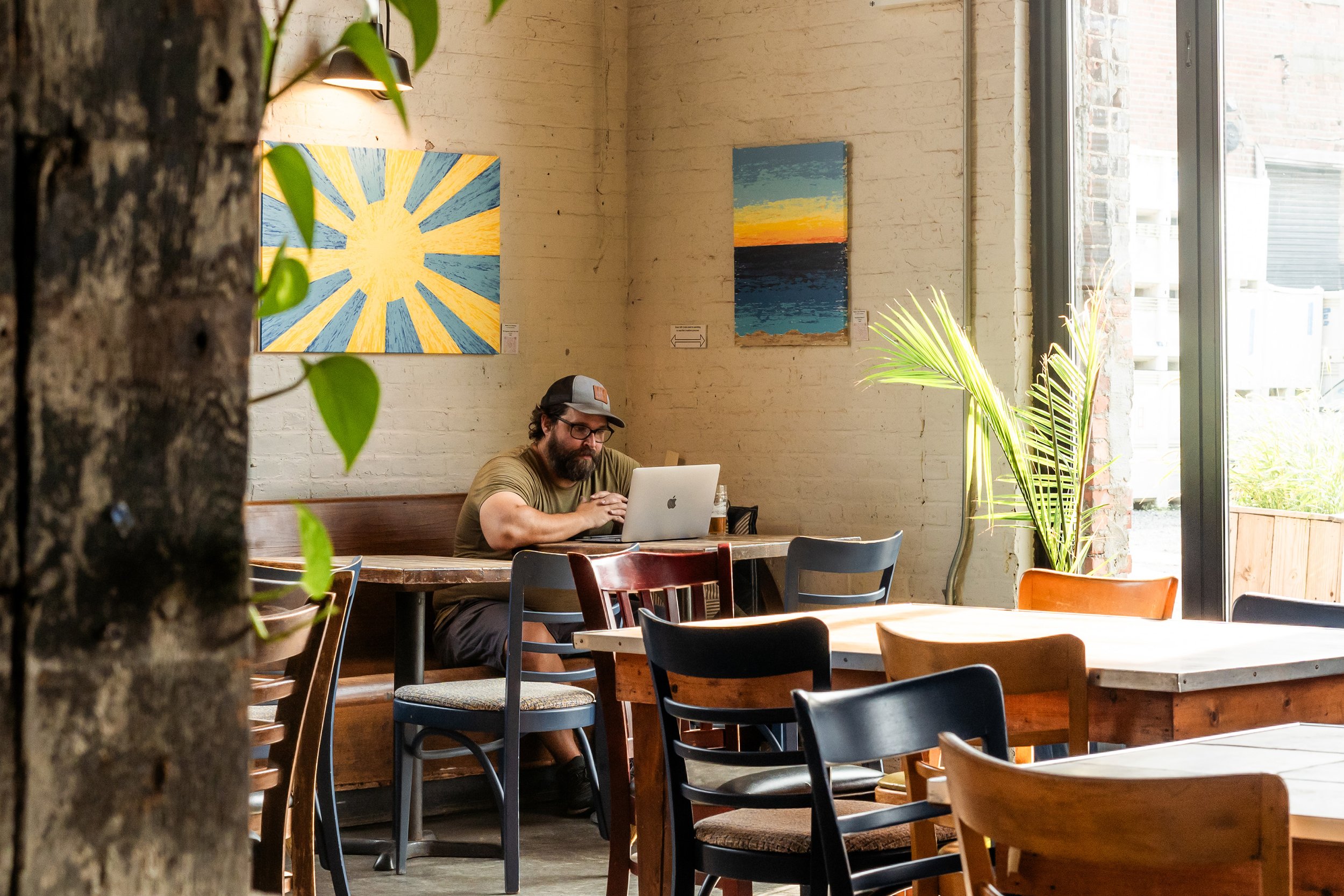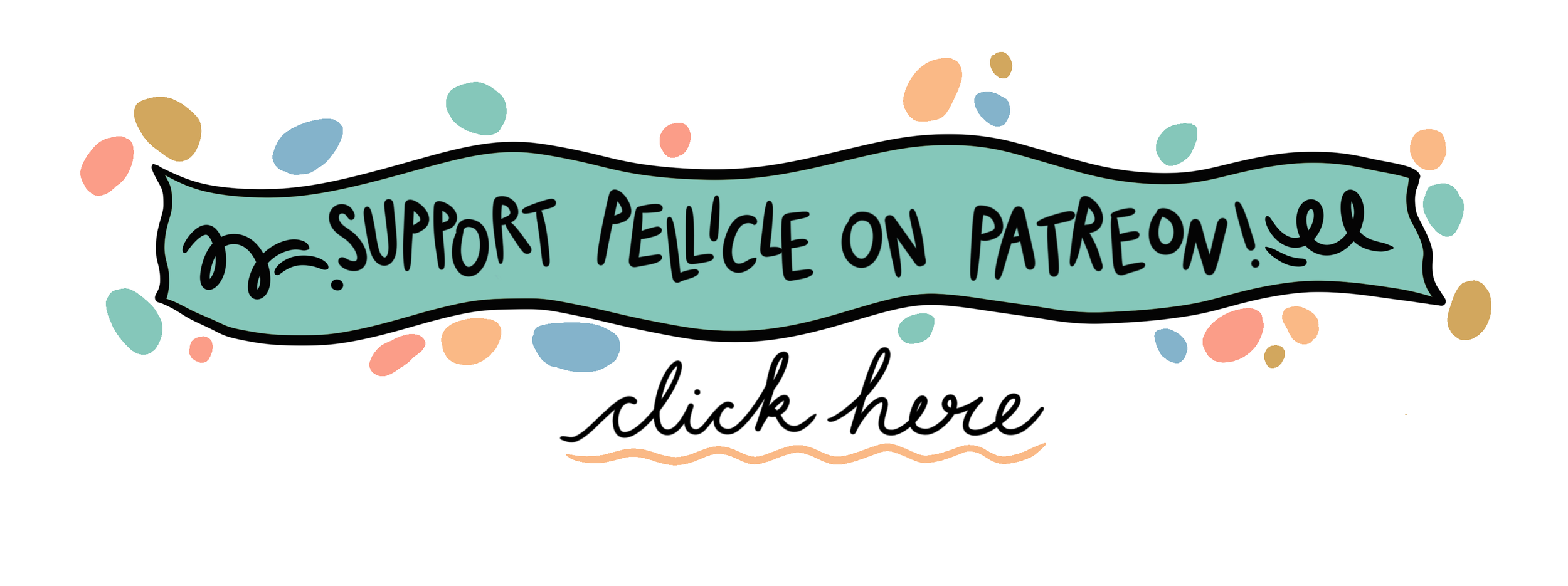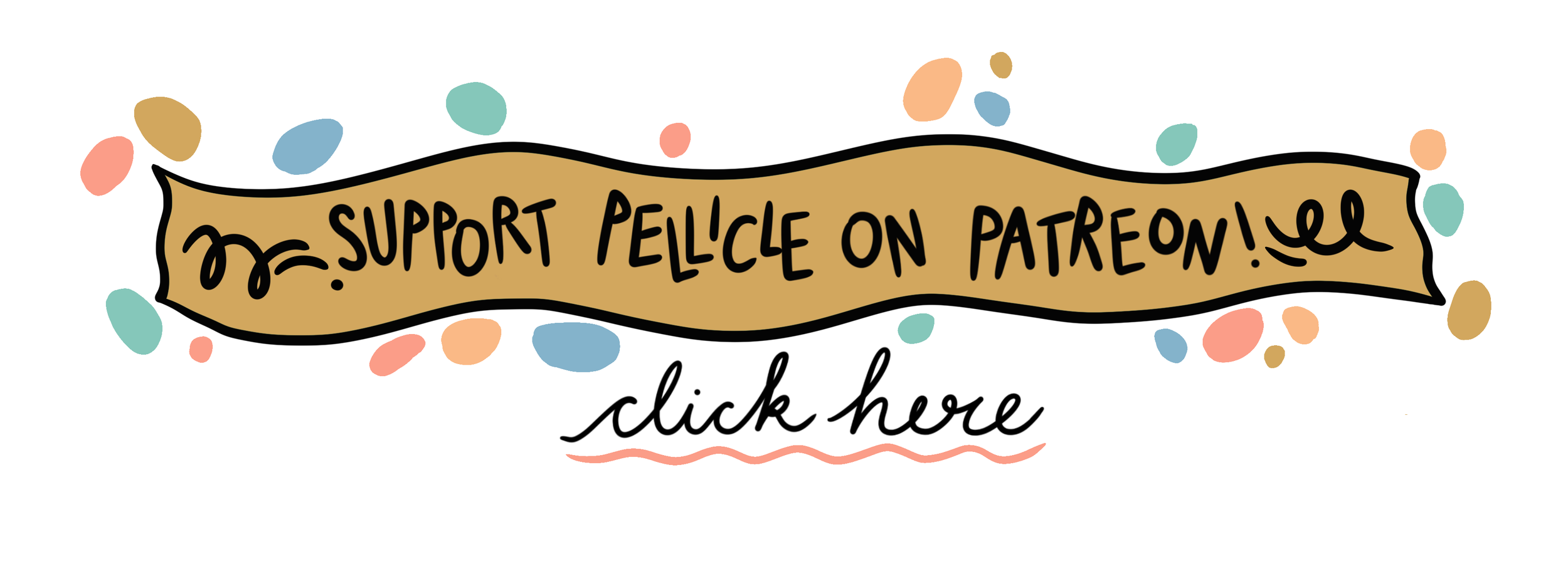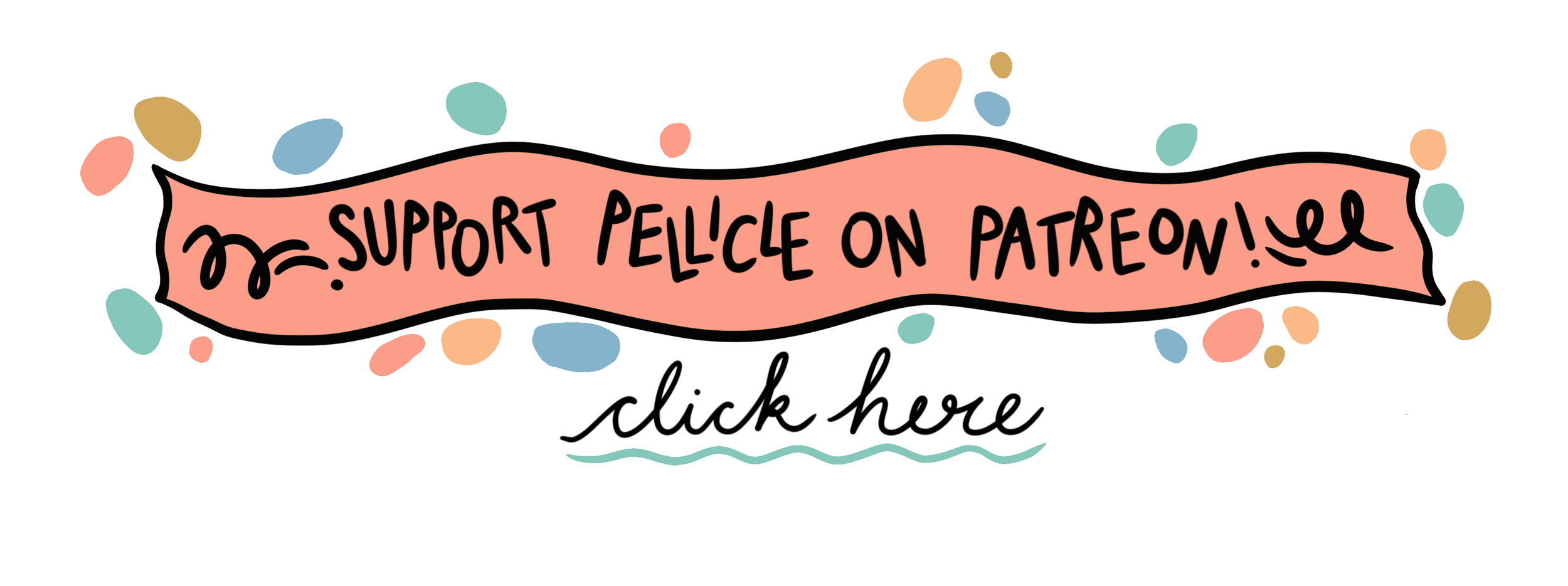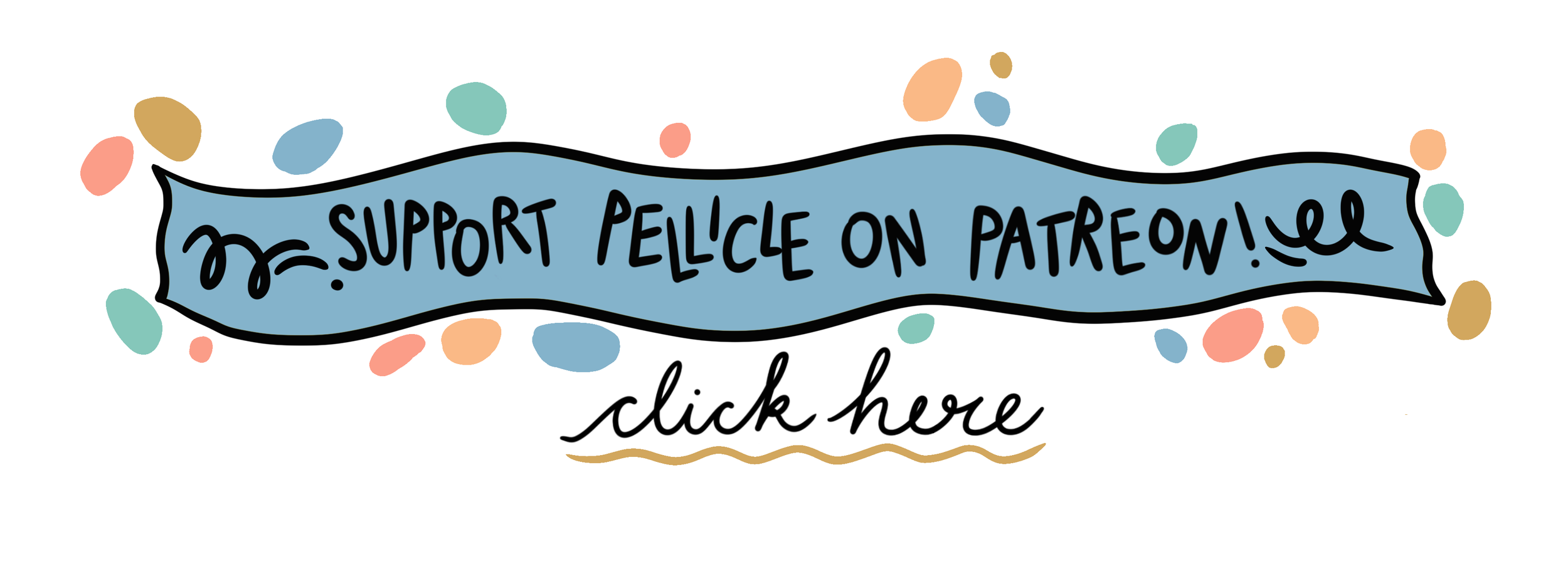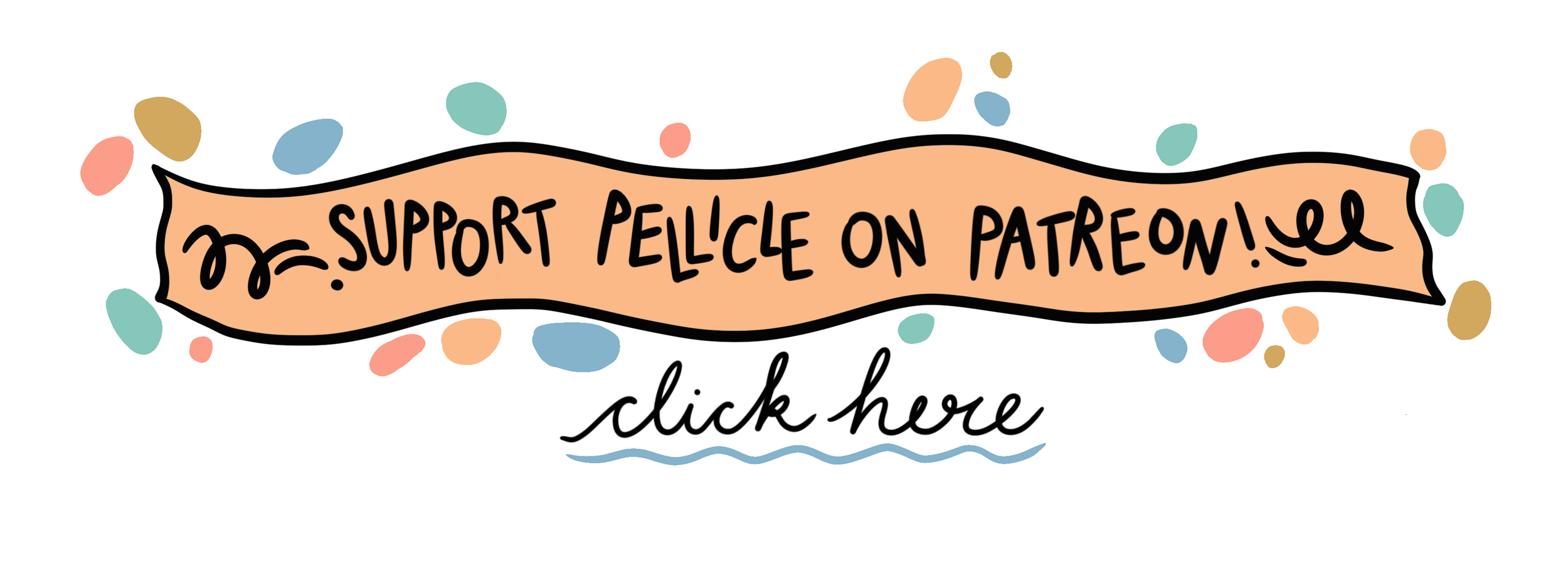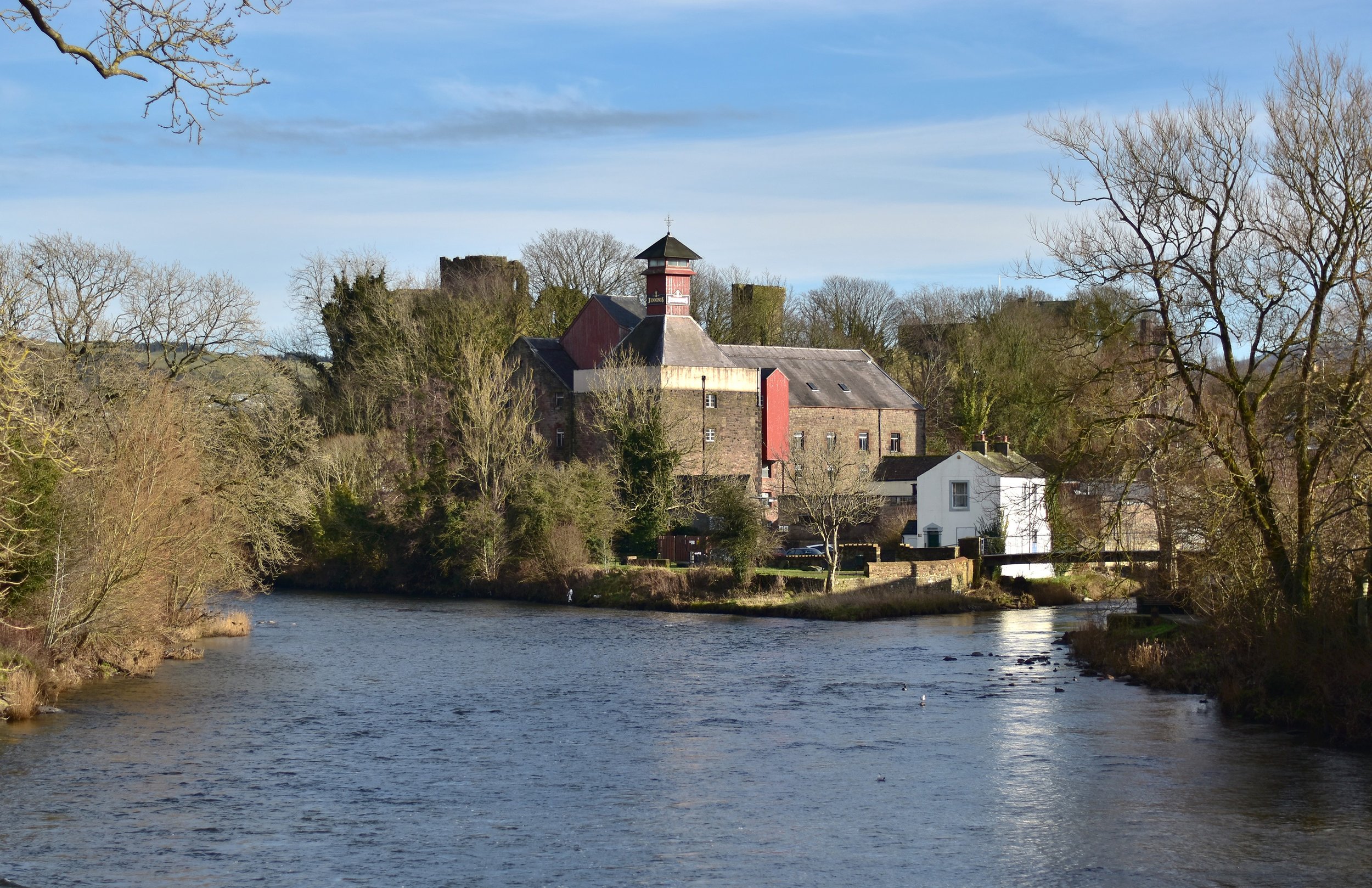Secondary Fermentation — New York City’s Strong Rope Brewery and the East Coast Cask Revival
A half-pint of amber-gold IPA glows as it’s set down on the bar, illuminated by sunlight pushing through muggy clouds, filling the waterfront taproom of Strong Rope Brewery with hazy orange light.
The beer is fresh from a nine-gallon firkin propped on the bar’s end, crowned with a pillowy cloud of foam. This IPA was “brewed in the Burton upon Trent style,” says Strong Rope’s founder Jason Sahler. With water adjusted for a degree of mineral hardness and a secondary fermentation on Brettanomyces, giving it a flavour and aroma that’s complex yet delicate. It’s exactly what you want to drink on cask, especially when you’re examining the presence of cask beer appreciation in your city, and Strong Rope’s city, New York.
Photography by Kyle Gonzales
Jason opened Strong Rope with his wife Christina Quintero in 2015, in the Gowanus neighbourhood of Brooklyn. In 2019, an Adirondacks location upstate joined the family, followed by its waterfront digs in the Red Hook district of Brooklyn in 2021. Jason’s original ambition was to run a cask-only brewery, but he knew he would have to temper his love of traditional beer with realism regarding consumer demand. So, he established a business crafting heritage-inspired beers with regional malt and hops, and whenever possible, he puts some of those beers into casks.
Once a year, New York City’s beer lovers know exactly when they can find not just some of those Strong Rope beers on cask, but other local breweries’ offerings too. From the very beginning of Strong Rope, Jason would gather his brewer friends to put on mini cask festivals. The ritual grew into the brewery’s annual “Caskiversary” event, celebrating its anniversary (though it’s been moved from the true opening month of December to February).
After years of radio silence on the cask beer front in New York City, cask festivals have once again become anticipated events, and announcements of what’s pouring on the hand pump have started populating Instagram pages. The difference between the prevalence cask beer enjoyed in New York over a decade ago and now, however, is that much of it is thanks to the breweries themselves, rather than beer-dedicated bars and British-themed pubs.
““The second we decided we were going to have an English-style pub ale program, that’s when the idea that cask ale would be a thing came to be.””
In the Long Island City neighbourhood of Queens, Fifth Hammer Brewing Company launched its cask program in 2020. For co-owner and brewer Chris Cuzme—long involved with organising cask beer events in New York through past jobs and roles like leading the New York City Homebrewers Guild—cask beer was part of the Fifth Hammer plan since the brewery opened in 2017.
“I am an idealist and have things I want to do that may or may not make fiscal sense, so we had to wait,” he says. “In the world of IPAs and sours, those are the things that keep the lights on.There are things we do to keep the lights on and things we do that are the reasons we want the lights on. To me, [being able to launch] our cask program is the reason we want the lights on.”
Brett Taylor, co-founder and head brewer at Brooklyn’s Wild East Brewing Company, echoes a similar sentiment. “The second we decided we were going to have an English-style pub ale program, that’s when the idea that cask ale would be a thing came to be,” he tells me.
Like Fifth Hammer, Wild East’s cask program couldn’t begin immediately, especially considering Wild East opened when New York was still under a degree of Covid-19 lockdowns in 2020, and could only sell beer to go at first. Over the first few years of the brewery’s life, Brett started sporadically putting beer into casks for special events such as anniversaries. Finally, in May 2023, Wild East acquired a beer engine and hand pump from Bradley Gillett, founder of Seneca Lake Brewing Company, a renowned upstate New York brewery devoted to producing cask beer.
If three’s a trend, Wild East helped cement what Strong Rope sparked in 2015: There’s a thirst for cask beer in New York, but it’s got to be good cask beer, and that’s an easier guarantee for breweries in their own taprooms.
***
Before opening their breweries and eventually helping revive the city’s cask enthusiasm, Jason, Chris, and Brett were friends, homebrewers, and members of the New York City beer community who regularly tracked cask beer to dependable bars and events.
It’s a scene I can’t shake my own nostalgia for. And as the different brewers, bar owners, and writers I spoke with for this story rattle off the venues in which you could find cask beer in the 2000’s, my own mental montage plays. At the time, it was beer bars you headed to for anything other than macro lagers, not brewery taprooms.
While nearly every neighbourhood had at least a couple of options, these places—an eclectic array of traditional-ish pubs, divier bare-bones spots, polished brewpubs, Belgian-inspired cellars, and sports-bar facsimiles—were destinations for which beer lovers would schlep across three train lines. I remember breathing deeply into bready, biscuity, pie-crusty, floral, woody, earthy, spicy, herbal aromas as I clutched my glass in the creaky wooden Blind Tiger Ale House, the warm and pubby David Copperfield’s House of Beer (RIP), the well-appointed and spacious Ginger Man (also RIP), and the rowdier Hop Devil Grill (oh, yes, RIP), and savouring smaller pours to suss out malt or hop differences at cask festivals at Chelsea Brewing Company (yep…RIP) and the Brooklyn location of d.b.a. (also closed; happily its original East Village space soldiers on).
Many of these beloved beer bars, that shaped the city’s beer scene whether they survived until today or not, opened their doors between the mid-1990s and the mid-to-late 2000s. They focused on the beer traditions of Europe, including imported beer on cask like Fuller’s, Coniston, Young’s, and Samuel Smith’s. The emerging American craft beers they simultaneously poured were also commonly classic British styles, often intended for cask.
Cask ale was once an integral part of the city’s beer scene, influencing the community’s members. Jimmy Carbone, host of the Beer Sessions Radio podcast, would tap English and German gravity kegs at his bar Jimmy’s No. 43 (open from 2005 until 2017), but recalls bigger operations like a “wall of casks” at now-shuttered Midtown spot Rattle ‘N Hum. That venue’s co-owner Patrick Donagher, an NYC beer fixture with his other beer bars and Alewife Brewing Company, not only went all in on his ambitious cask program, but also founded the Get Real NY cask festival.
No discussion of cask beer in NYC is complete without the man many credit for its spread, Alex Hall. Alex moved to New York in 1999 from Brighton, England, where he’d been a pub’s cask cellar person and a co-founder of the Glastonwick Cask Beer & Music Festival.
““What motivated me to fly the cask banner was that I found cask often badly kept and more often [than not] misunderstood.””
“What motivated me to fly the cask banner’[in NYC] was that I found cask often badly kept and more often [than not] misunderstood,” Alex says. “I found I was pretty much the only person in a city of eight million people who could take a piece of the UK’s heritage overseas.”
Alex sold firkins door-to-door to bars, and founded cask festivals in New York, including the one at d.b.a. in Brooklyn, where he worked as cellar person under owner and fellow cask appreciator Ray Deter.
Having also tracked bars with cask beer for his blog Gotham Imbiber, Alex confirms there were 67 New York bars serving cask pre-Covid. The pandemic certainly acted as a nail in the coffin for cask beer, moving imbibing into the home. But in New York City, it’s safe to say that while plenty of bars had carried on with perhaps intermittent cask programs, the fervour had cooled. The beer scene had moved into brewery taprooms, suddenly allowed to exist after New York governor Andrew Cuomo signed The Craft NY Act into effect in 2014. Even in the beer bars that remained popular, consumer interests had shifted away from those more nuanced styles that made sense on cask.
“Everything blew up with the IPA, so cask really seemed to die off,” New York beer writer (and Pellicle contributor) Kevin Kain tells me. “There was a period after the late 2000s where it got really hard to come by; people were onto other stuff.”
***
Ironically, cask beer in the United States may have quickened its own decline. For every bar sticking to classic British styles on cask, several more featured American craft beer offerings. The breweries that did specialise in cask beer often took advantage of the smaller batch size and flavour-highlighting potential of the dispense method to experiment. Perhaps this was inevitable in the hands of American brewers, looking to appeal to “bigger and bolder is better” American drinkers’ thirst. It was impossible for some breweries to ignore that itch: “How about that classic British style…but with habaneros?”
“Breweries would throw adjuncts in, fruits in,” says Chris O’Leary, who has documented the New York City beer scene since 2008 with his blog Brew York. “It was a precursor to the wild things we put in beer now that we weren’t back then… For a purist, it was certainly not the way that cask ale would traditionally be served.”
According to Greg Engert, partner and beverage director at the Neighbourhood Restaurant Group, breweries could take one IPA and spin it into three different pins, each with different fruits. Greg has established acclaimed cask programs at bars and breweries like Manhattan’s The Grand Delancey.
“But this was also the beginning of the end, as it led to [craft beer]’s constant release schedule,” he tells me. Consumers got used to relentless novelty. Alongside the rise of the IPA and the growth of brewery taprooms, imbibers sought continuously reinvented hop bombs in cans, not beautifully subtle pub ales on cask. In step with lagging demand, bars too commonly did cask beer no favours, Kain adds, serving beer for too long and at improper temperatures (some venues gave in to the American assumption that all beer must be crisply cold, while others let beer get too warm). This made consumers think cask beer was bad without the understanding that the service was to blame.
As bars’ cask programs waned and most breweries abandoned their cask beer programs, one stands out for being dedicated to serving cask beer alone. Opening just months after Strong Rope had kicked its business off without Jason Sahler’s own initial cask-exclusive ambition, Dutchess Ales set about supplying the stubbornly devoted bars still running cask programs. After spending extended periods of time in London and Dorset, Michael Messenie was in New York working in the music industry and hosting a radio show with Tim Lee, a former UK DJ. They searched for good beer in the city and always came up short.
“It was a clumsy time in New York [beer],” Michael recalls of the 2000s. “There were a lot of massive IPAs, beer bars serving imperial stouts in the middle of August… It was all so confusing to us. We thought, ‘We can import Maris Otter [malt], we can buy heirloom hops in the US; let’s make our own traditional ales.’”
““Everything blew up with the IPA, so cask really seemed to die off.””
Michael and Tim eventually opened Dutchess Ales a couple hours north of New York City in 2016, and remained a cask-only brewery for two years. It came to dominate the cask beer scene in New York during an otherwise barren stretch. Because there were in fact not enough bars running cask programs properly to partner with, Messenie and Lee had no choice but to expand to producing keg beer, but those two years in addition to their continued brewing of cask beer have made Dutchess synonymous with cask in New York.
In more recent years some of New York City’s own breweries, like Strong Rope, have become just as cask-associated. At Jones Wood Foundry, an Upper East Side British gastropub taking its cask program seriously since opening in 2011, the Summer Cask Ale Series has tapped offerings from Strong Rope, Fifth Hammer, Wild East, and Dutchess, in addition to Brooklyn’s Endless Life, Threes Brewing, and Transmitter Brewing, plus Gun Hill Brewing from the Bronx. These are among the breweries who also brew special beers for Fifth Hammer’s Caskalot festival in May, and Strong Rope’s February Caskiversary.
The charge is led by the NYC breweries who have always fought the idea that hazy, heavily hopped beers rule all. When Strong Rope opened at the end of 2015, Jason realised an all-cask beer brewery wouldn’t survive, but still built Strong Rope on traditional styles in what was arguably the height of haze mania. Other Half Brewing Company had opened in 2014 not far from where Strong Rope would launch, and within a couple of years, had sparked line culture in New York. While contemporaries looked to places like Australia and New Zealand for tropical-candy hops, Strong Rope formed relationships with New York State farmers, using local ingredients for as much of their recipes as possible.
It took a bit of education, Jason says, helping patrons understand the styles brewed and the ingredients used. Strong Rope developed its own sturdy following of beer lovers looking for those traditional options. When all the attention was on hype haze purveyors, Strong Rope was not only a port in the storm for drinkers seeking amber ales or dark milds, but was also keeping cask appreciation alive with its special events, collaborations, and Caskiversary festival. The brewery was already in a position to run with the revived burst of cask beer enthusiasm happening now.
Helping fuel that enthusiasm is a long-awaited return to consumer demand for easier drinking, more traditional styles.
“We’re in the era of declining ABVs,” Brett says, “More of a beer-flavoured beer era. Lager is the star of the show, but I feel that English ales and traditional beers are along for the ride.”
The masses, it seems, are now joining the pre-existing lager and pub ale fanatics already flocking to Strong Rope, Fifth Hammer, and Wild East for cask tappings. The breweries who always embraced rich beer traditions, even before it was “cool,” are the natural go-to’s for cask-curious drinkers now. And for this revival of cask beer in New York, it makes sense for breweries to keep cask programs in-house. It’s a unique experience that gets consumers into taprooms, offering something they can’t get at home, Greg Engert tells me. Plus, this way, breweries can maintain total control of how their cask beers are served.
“The more people doing [cask] right and treating it properly, that will resonate with the people who really love it,” Jason says, adding that there are a few other New York City breweries he could imagine heeding the cask’s call. In the immediate future, Jason looks forward to the taproom’s cask engine being installed, but it’s clear he’s not stopping there with what cask beer can look like in New York City, and happily, it seems plenty of local breweries are along for the ride.
“Personally, I’d like to have a ‘Cask Week’ in the city, ending it with Caskiversary,” he says. “It would be a whole week of showcasing it, with bars and breweries from the city and the whole state…We’d have parties, festivals, educational talks around it, panels…It would be education for consumers, but also for producers.”







